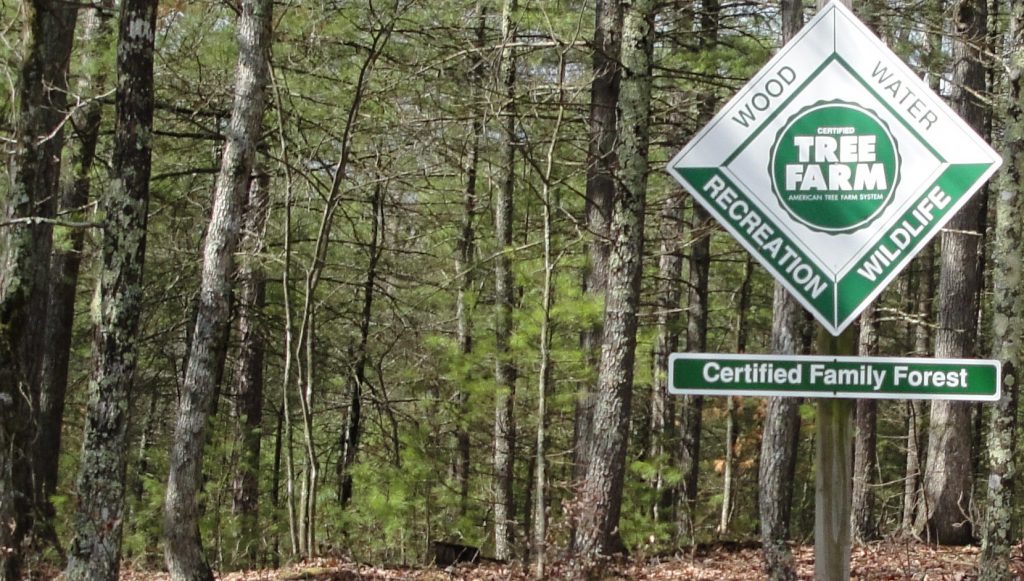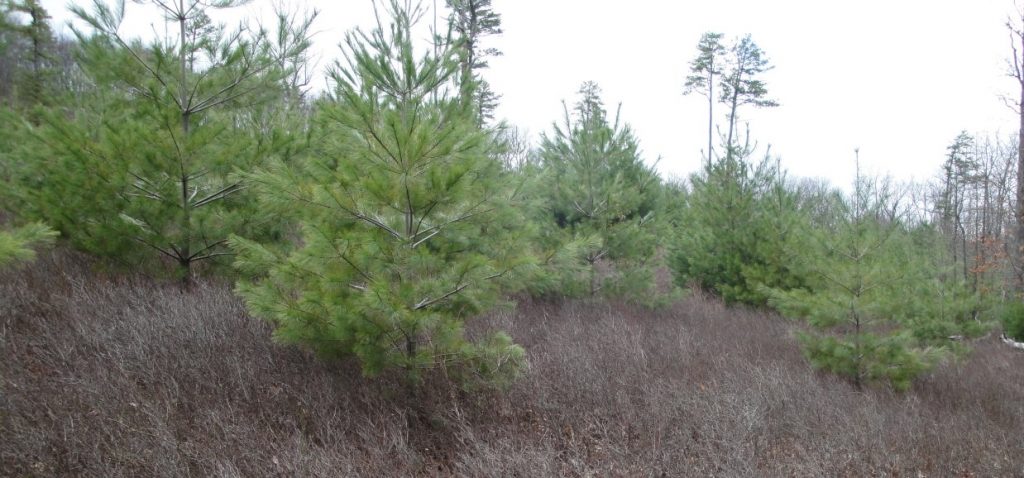
Noble Laesch, the father of the current owner Judith Gontis, bought this acreage in the late 1960s and it has been a certified tree farm for the last twenty-eight years. Laesch and Gontis did not live on the land and so for the last twenty-eight years it has been forester Frank Sherwood’s business and pleasure to look after these 927 acres of hilly mixed forest just inside the Rockingham County line.

It is a tree farm with great diversity in terms of species composition, topography, soils and microclimates. The ridges are still dominated by mixed hardwoods, although gradually white pines are taking over, both through natural processes and forestry practices. We looked at a logging operations and examined some of the recently cut stumps during a recent visit. The partially shade tolerant white pines had seeded in naturally under an older stand of mixed hardwood, mostly scarlet oak, but were suppressed until released by the forestry operation.
We counted 130 rings on a scarlet oak stump. For the first sixty years of life, the tree grew slowly and crookedly. It is clear that there were too many trees here competing for sun, nutrients and water. We have no record of how the neighboring trees were thinned, but the tree started to grow much faster at around sixty until it slowed in older age. Unfortunately, although very big, this scarlet oak, like most of the others in the stand, had begun to rot in the middle. It was past time to remove them and give the white pines their time in the sun. Within a few years this will be an almost pure stand of white pine.

Farther down the hill was a recently thinned plantation, a total of 126 acres of twenty-year-old white pine and a clear cut left to regenerate naturally in white pine. The trees were vigorous but widely spaced. The blueberries had come in very thickly and perhaps they just outran the pine seedlings. The plantation was clearly better for timber production, but the naturally regenerated area had cost nothing to plant and the widely spaced trees were providing excellent openings for wildlife. As with any management plan, it depends on what the landowner wants and it was interesting to see the side-by-side comparison of different choices.

The tulip-poplars that grow so profusely on the eastern slopes of the Blue Ridge do well here too, but only in coves or bowls that have deeper soil than the rocky and sometimes sandy slopes. In these places you find towering tulip poplars that can be harvested at regular intervals and regenerated naturally.
The rest of the tree farm is mixed hardwoods, especially white and red oak, plus some maples, as well as white pine. This is white pine country. Although loblolly can be grown here too, the white pines do it naturally. With Frank Sherwood’s advice, Mrs. Gontis, as her father before her, manages for pulp and saw timber mostly through selective cuttings.
Like all well-managed tree farms, this one provides a home for wildlife, a place for recreation and protection for water resources. The farm is drained by Runion Creek, whose waters find their way into the Shenandoah and the Potomac and eventually into the Chesapeake Bay. Although there is some development in the region, it looks like this tree farm and its 927 acres will continue to provide these kinds of ecological services for years to come.
